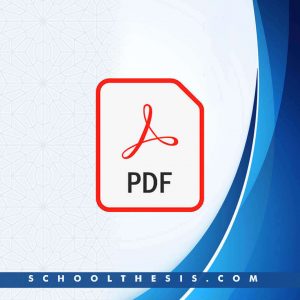Negation in Kuturmi Language

Negation in Kuturmi Language
Chapter One of Negation in Kuturmi Language
INTRODUCTION
This research is aimed at describing an aspect of the syntax of Kuturmi language, and to show the important peculiarities of the language.
HISTORICAL BACKGROUND/GEOGRAPHICAL LOCATION
Kuturmi land is situated geographically between lat. 9.50 North and 100 South and Longitude 7.50 East and 8.00 West. The region lies to the Western part of Kachia district headquarters. It is bounded by the river Gurara to the East and to the North by Kadara tribe twelve (12) kilometers from Kachia town and it occupies about eight thousand (8000) square kilometers (Tanko Kankana 2010).
According to Tanko there are two sources of the Kuturmi origin. One of the traditional historical sources had it that the people of Kuturmi, formerly called the Kutumbawa, hailed from Daura province in Katsina state. Bagauda led the Kutumbawa people to capture Kano empire in the year 499 AD. Bagauda was said to be the grandson of Bayajidda, the snake killer of Daura.
The second source puts it that the Kuturmi people migrated to their present settlement from Kano city in 1807 AD as a result of the Jihad wars. This history also revealed that the Kuturmi (Kutumba) race ruled Kano empire between 14th – 18th centuries. The name Kutumba was coined from mortar carving which was given to them by neighbours because that was their occupation (the word mortar is Turmi in Hausa).
It was alleged that when Kano was overthrown in 1807 AD Kutumbawa people under the leadership of Bakutumbe fled to Kabo village to the West of Kano city from where they migrated southwards in search of refuge, they passed through Zaria to the north and Kauru to the south settled in a village called Kallah, from Kallah they attacked and conquered Kujuru Kingdom. The Kuturmi still in search of refuge moved further southward and settled at Iburu in Kufana district from where they went further south and settled at their present site.
As a result of frequent wars and slave raids, the Kuturmi people have been reduced to a small number. It was also alleged that during the fall of Kutumbawa dynasty a group of the Kutumbawa were taken captive to Barao Empire and another to lower Plateau close to the Lantang people. The Kurama people in Lere local government and the Gwadara people in the lower Plateau state are linked to Kutumbawa origin.
SOCIO-CULTURAL PROFILE
Socio-cultural profile refers the valued ethics/norms of a given set of people in a given community in the way of life, behaviour, action and performances etc. The Kuturmi people have a peculiar way of living which shows in their dressings, tribal marks, religion, occupation and marriage.
DRESSING
Before the advent of Christianity, men dressed in animal skins and Agwado, the animal skin was worn around the waist, the agwado is one piece of dress made from cotton. It was worn by children and adolescents. The women dressed in ‘ture’ a piece of cloth of about 1.5 meter long and two inches wide. The young girls use leaves. The men now dress in simple dresses occasionally using flowing gowns on festivals and on Sundays, the women wear wrappers and blouses with hair tie to match after the advent of Christianity.
TRIBALMARKS
The Kuturmi people are of a common identity with their longitudinal tribal marks on the cheeks. This was a sign of wealth and common identity in the olden days; though some still carry the mark today.
RELIGION
To Kuturmi people God is the creator and the controller of the universe who has the final and absolute authority over his subject or creation. God is known as ‘Unung’ i.e. Supreme Being. He is known to be the father of gods and they see him as too holy to be approached. Thus, they created intermediaries of which one is ‘okun’ (the ancestral spirits) and the shrine is called ‘ujenekwu’, the chief priest is known as ‘ete-kwu’ who normally leads the people to perform rituals.
Kuturmi people also believe in spirits known as ‘Ushari’ which live in various places such as rivers, mountains, etc. and of various forms. As a result of dominance of Christian religion, the belief in ancestral shrine has drastically reduced: However, this is not to say some people do not still worship God in the traditional way.
OCCUPATION
The major occupation of Kuturmi people is farming,in addition to mortar carving and blacksmith work. Hunting and dishing are practiced on part time basis. They grow crops such as millet, maize, rice, guinea corn, cocoyam, yam etc.
MARRIAGE SYSTEM
Marriage in the olden days is the responsibility of parents. They choose wife for their male and husband for their female right from the day of birth. The parent simply ties a rope around the leg of the baby indicating his or her willingness to marry her to his or her son from that time. Gift items are sent to the family of the lady and when they are ripe for marriage the dowry will be paid. The dowry was usually a hen and a pot of local wine (burukutu). The culture has been replaced by the western method of marriage.
GENETIC CLASSIFICATION
AFRICA
Niger Kordofanian
Niger Congo Kordofanian
West Atlantic Kru Kwa Mande Benue-Congo
Plateau Junkoid Cross-River
Plateau 1 Plateau 2 Plateau 3 Plateau 4 Plateau 5 Plateau 6
Eloyi Zaria Group
Kiro Subgroup Jaba Mande Subgroup Central Kadara Subgroup
Kuturmi Idon Kadara Doka Ikulu Kajuni
SCOPE AND ORGANIZATION OF THE STUDY
This study focuses on the aspect of negation of Kuturmi language. Chapter one deals with the general introduction such as background to the study, history of the language, sociolinguistics profile, genetic classification and theoretical framework. Chapter two deals with the basic syntactic rules, lexical categories. Chapter three entails focus on negation of Kuturmi language. Chapter four contains the transformational process in Kuturmi language and chapter five deals with the summary and conclusion.
